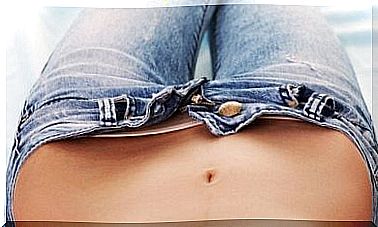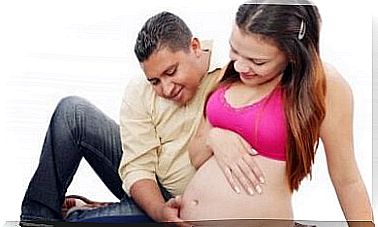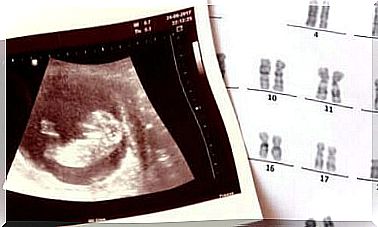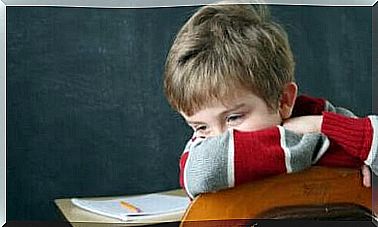The Sucking Reflex In Newborns
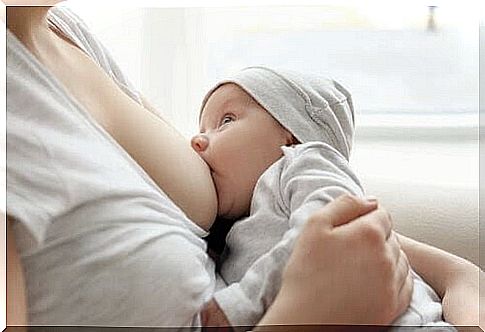
The sucking reflex in newborns is involuntary, and it can be a sign of abnormal development if it does not work properly. It is a primitive instinct found in all mammals, and humans are no exception.
If you are already or will soon become a breastfeeding mother, you can find out everything you need to know about the sucking reflex here.
Exactly what is the suction reflex?
Infants are born with instincts that they need to survive, and even if they depend on their parents to take care of them, innate and involuntary abilities, such as the sucking reflex, are important for breastfeeding, for example.
Infants train on the sucking reflex even before birth, in the womb. This can be seen during ultrasound examinations from about the fourth month of pregnancy.
You can see that the child then begins to suck on the thumb. However, amniotic fluid also plays an important role in the development of this reflex, which goes hand in hand with the swallowing reflex.
The process should not be mistaken as a result of classical learning. On the contrary, sucking and swallowing reflexes are so old that they are encoded in the genes of human infants, just as in pups of all mammals.
Exercise allows the child to adjust the coordination so that the two reflexes complement each other. At birth, the baby must use the sucking reflex in combination with the swallowing reflex, which means that he masters the ability to properly suck and ingest his mother’s breast milk.
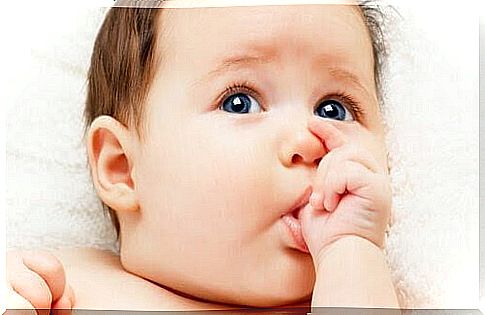
The suction reflex is temporary
The mother’s breast is not needed to observe the presence of the instinctive sucking reflex. It is enough to put a finger close to the baby’s lips for him to respond to the stimulus by wanting to suck.
The sucking reflex usually disappears when the baby is between six and nine months old. However, this does not only mean that this is the best time to stop breastfeeding, and the baby does not lose the ability to suck or breastfeed.
What happens is that the baby begins to become aware of how to suck, ie. that sucking now becomes voluntary instead of a reflex, and that infants before the end of the first year of life may exhibit behaviors such as choosing to stop sucking on the nipple or pacifier when he has no appetite.
Different types of sucking in children
There are two ways to classify the sucking reflex: one from the direct perspective of how the baby sucks, and the other is about the effect that the reflex has on the mother.
Both classifications have two subtypes: mature and immature sucking and correct and incorrect sucking, respectively.
Below we go through each one:
Mature sucking
The sucking reflex is defined as mature if the baby sucks between 10 and 30 times without taking a break during breastfeeding.
This indicates that the baby has no problem coordinating sucking, swallowing and breathing, and that he or she can easily perform all three while breastfeeding.
Immature sucking
This is when the child performs the reflex incorrectly or with difficulty. This can cause the baby to suck between 3 and 5 times and then stop, either to rest or to breathe.
Immature sucking can be a sign of poor coordination between the impulses needed to breastfeed. When the baby seems to struggle to suck in the mother’s milk and does not succeed, it can be a physiological problem behind it, such as a too short tongue band.
Correctly sucking
Proper execution of the sucking reflex is smooth and natural, and because of this it should not cause damage to or irritate the mother’s breasts.
This is usually the case with mature sucking. However, although damage to the mother’s breasts is not common during mature sucking, it can sometimes occur.

Improper suction
This is when it hurts when the baby sucks or if it damages the mother’s breasts. It can result in painful breastfeeding or even cause an infection in the nipple. If the baby struggles to suck and loses weight or does not gain weight, it may be a sign of a too short tongue band.
It is important to note that this does not necessarily indicate that something is wrong. Children with an immature or incorrect suction pattern may be due to premature use of a baby bottle or pacifier, which may make it difficult for a child to get used to the mother’s breasts.
Other purposes of the suction reflex
Sucking not only enables the baby to eat, but it is actually a two-way stimulus. The mother’s breasts automatically stimulate the baby’s lips to start sucking, and at the same time the baby’s sucking mother stimulates the baby to produce milk.
In addition, the sucking reflex has a calming effect on the child, more because the contact with the mother satisfies his need to feel safe and secure, than on the feeding itself.
It is therefore not uncommon for the baby to feel more comfortable as it is allowed to sleep at its mother’s breasts, even if it is not eating.
